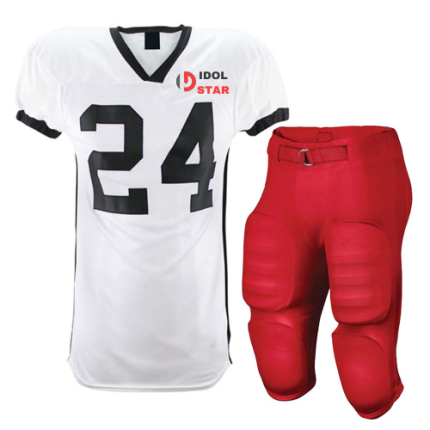Jersey: The jersey is typically made from lightweight, moisture-wicking material that helps players stay cool and dry during intense physical activity. It features the team’s colors, logos, and player number. The tight-fitting design reduces the risk of opponents grabbing onto it.
Shoulder Pads: Beneath the jersey, players wear shoulder pads to protect their shoulders, collarbones, and upper chest. These pads are typically made of hard plastic and foam to absorb impact and disperse it away from the body.
Helmet: The helmet is arguably the most crucial piece of protective gear. It’s constructed with a hard outer shell and interior padding to safeguard the head from concussions and injuries. Modern helmets often have face masks with a cage design to protect the player’s face without obstructing vision.
Mouthguard: A mouthguard is worn to protect the teeth and prevent concussions by absorbing some of the impact from hits to the head.
Cleats: Football cleats are specialized shoes with spikes on the soles to provide traction on the field’s grass or turf. Different positions may require different types of cleats for optimal performance.
Pants: Football pants are typically made of durable material and feature padding on the hips, thighs, and knees to cushion players during tackles and falls. These pads are often removable for easy cleaning.
Thigh and Knee Pads: In addition to the padding in the pants, players often wear additional thigh and knee pads for added protection during play.
Girdle or Compression Shorts: Some players wear a girdle or compression shorts underneath their uniform to provide extra support and protection for the lower body.
Gloves: Receivers, running backs, and some defensive players may wear specialized gloves with tacky palms for improved grip on the ball.
Socks and Accessories: Players wear team-colored socks and may use additional accessories like wristbands, arm sleeves, or bicep bands for style and to keep sweat at bay.












Reviews
There are no reviews yet.